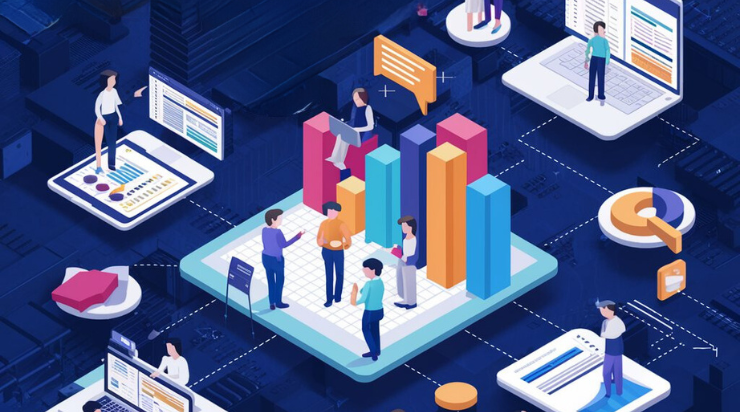In today’s fast-paced business environment, effective collaboration is crucial for the success of any project. Traditional project management methods often fall short in addressing the complexities of modern projects, leading to inefficiencies and communication breakdowns. At Nogiz.com, we understand the importance of seamless collaboration and have developed state-of-the-art project management software to help businesses overcome these challenges. This blog explores how advanced project management software can improve collaboration and drive project success.
The Challenges of Modern Project Management
Modern projects are often multifaceted, involving numerous stakeholders, tight deadlines, and a vast array of tasks that need to be coordinated. Common challenges include:
- Communication breakdowns: With team members often working from different locations, ensuring consistent and clear communication can be difficult.
- Task Management: Keeping track of multiple tasks and their progress can be overwhelming without a centralised system.
- Resource Allocation: Efficiently allocating resources and ensuring they are used optimally requires detailed oversight.
- Deadline Management: Meeting project deadlines requires meticulous planning and constant monitoring of progress.
How State-of-the-Art Project Management Software Addresses These Challenges
State-of-the-art project management software is designed to streamline collaboration, improve communication, and enhance overall project efficiency. Here are some key features and benefits:
1. Centralized Communication
Effective collaboration starts with clear and consistent communication. Modern project management software provides a centralized platform where all project-related communications can take place. This ensures that everyone is on the same page and reduces the risk of miscommunication.
- Example: Integrated chat and messaging features allow team members to communicate in real-time, share updates, and discuss issues directly within the project management tool.
2. Task Management and Tracking
Advanced project management software allows for detailed task management, where tasks can be assigned, tracked, and updated in real-time. This ensures that everyone knows what they need to do and can see the progress of the project at a glance.
- Example: Visual task boards, such as Kanban boards, provide a clear overview of task statuses, helping teams stay organized and prioritize their work effectively.
3. Resource Management
Efficient resource management is crucial for project success. Project management software helps in planning and allocating resources, ensuring that they are used optimally and are available when needed.
- Example: Resource allocation features allow project managers to assign resources based on availability and skill sets, avoiding overloading team members and ensuring balanced workloads.
4. Deadline and Milestone Tracking
Meeting deadlines is essential for project success. State-of-the-art project management software includes features for setting, tracking, and managing deadlines and milestones, ensuring that projects stay on schedule.
- Example: Gantt charts provide a visual timeline of the project, showing the start and end dates of tasks, dependencies, and critical milestones, making it easier to monitor progress and adjust plans as needed.
5. Document Management
Keeping all project-related documents in one place ensures that team members have easy access to the information they need. Project management software provides centralized document storage and management.
- Example: File sharing and version control features allow team members to upload, share, and collaborate on documents, ensuring that everyone has access to the latest versions.

Benefits of Using State-of-the-Art Project Management Software
- Improved Collaboration and Communication
- Increased Productivity and Efficiency
- Enhanced Visibility and Transparency
- Better Risk Management
- User-Friendly Interface
- Customizable Workflows
- Integration Capabilities
- Scalability



